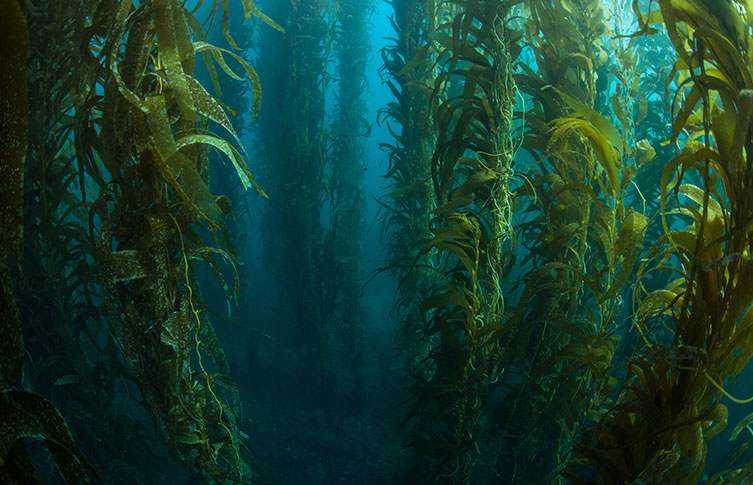Global sustainability is an important issue facing current and future generations. Humanity as a whole will have to take issues of environmental stability and reversing the effects of climate change into serious consideration.
Developing sustainable farming practices are vital to fostering a clean environment that will allow Earth to habitual (with high standards of living) for centuries to come. Even with Developments in cultured meat and advances in green energy are there are many other areas of the farming industry which need immediate attention
Decreasing Fish Populations
The fishing industry plays a significant role in the economies of many countries, with over a hundred million metric tons of aquatic organisms captured and farmed every year. So in addition to providing the world with healthy seafood options, fishing is the primary source of income for thousands of people.
But global stocks of fish are rapidly declining. A stunning 31.4 percent of the fish stocks monitored by the Food and Agriculture Organization of the United Nations (FAO) are classified as being overfished, meaning they are fished at a level that is unsustainable. In Indonesia alone, where fish contribute significantly to the country’s food security, there are 75 percent fewer fish today than just 15 years ago.
Decreasing fish populations aren’t the only cause for the global fishing industry crisis; a significant decline in coral, a natural habitat for fish, has also been a serious issue for several years.
A group of scientists in Belize found that the reefs there were healthy and vibrant until the 1980s, when a deadly combination of disease and high sea temperatures began killing many of the corals. Others suggest that the decline began centuries earlier due to overfishing.
Scientists widely agree that the bottom line is the same: coral reefs are dying, and that’s problematic for numerous ecosystems. The decline of fish and coral reefs may seem like a hopeless situation for those families whose livelihoods are in jeopardy, but there is hope — in the form of seaweed — which may be the key to a more sustainable future.
How Seaweed Can Help
Seaweed grows extremely fast, kelp can grow up to 12 feet long in less than three months. When compared to fish populations, seaweed supply continues to grow unhampered.
Furthermore, seaweed farming requires no fresh water, land, pesticides, herbicides or fertilizers. This already makes it a preferable alternative to land farming, which often requires all of these. Traditional land farming can also contribute to deforestation, pollution, and damage to the ozone layer through the use of synthetic chemicals and the release of harmful gases. By means of contrast, seaweed farming doesn’t leave a carbon footprint, as seaweed actually absorbs nitrogen, phosphorus, and carbon dioxide.
When planted in a barren area of ocean, seaweed becomes a new habitat and food source for aquatic life, most notably invertebrates and fish. This means that as well as being a sustainable form of aquaculture, seaweed farming can actually have positive effects on revitalizing otherwise neglected parts of the ocean, helping them to thrive for years to come.
Also, seaweed farming is as economically sustainable as it is environmentally friendly. For those fishing families who had previously suffered as a result of declining fish stocks, seaweed farming is now a reliable source of income. Indonesia, in particular, has shifted from its dependence on fishing to become one of the foremost providers of seaweed worldwide, supplying around two-thirds of the total global production of seaweed.
The demand for seaweed is high, mostly from its use in food such as sushi, as well as high demand for products that are derived from seaweed, such as carrageenan.
Why Carrageenan Is Important
Carrageenan is an ingredient derived from red seaweed and is used in a variety of products like ice cream, chocolate milk, yogurt, and even baby formula. While beneficial in many ways, carrageenan is particularly useful in extending the shelf life of products without affecting quality, making it a staple of the food industry.
The seaweed that carrageenan is derived from is harvested by hand on family farms. A report from the FAO found that “because the production model favors small-scale, family operations over corporate, plantation style farms, seaweed farming generates substantial employment relative to other forms of aquaculture.”
Serious efforts have been made by governments, NGOs, and food companies to further develop seaweed farming as a sustainable and profitable option for coastal communities around the world. Some of the efforts can be traced back to the 1960s when large corporations began assisting farmers in developing countries to implement new tropical seaweed farming techniques. But there’s still a long way to go.
Carrageenan, along with other aquaculture crops, has the potential to help protect not only developing economies, but also the oceans themselves. But before it can affect positive change on a global scale, governments and individual communities need to be aware of the benefits and advantages of seaweed farming. By promoting aquaculture on a global scale we may just be helping seaweed save the world.
Difficult Challenges Ahead
Fostering a future where planetary of quality life improves is a difficult task. Even protecting the current quality of life on terra is a trying undertaking. Global sustainability efforts require real change, innovative ideas, and a willingness to accept corruption- free scientific data presented in good faith.
Thinking outside of traditional means is the key to solving economic and ecological problems. This goes far beyond appeals to emotion, shaming individuals for their dietary choices, or arguments based on opinion.
Preserving and supporting the ocean, those who rely on it, and nature, in general, depends on real solutions. Seaweed farming is a unique and natural solution that could help protect our planet.


